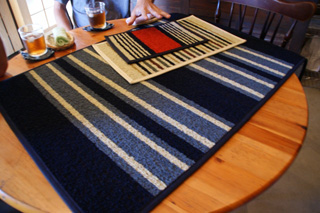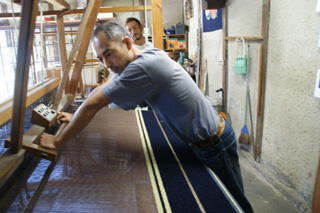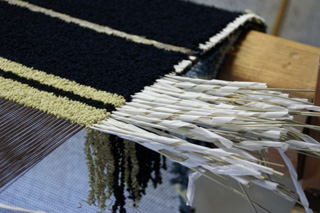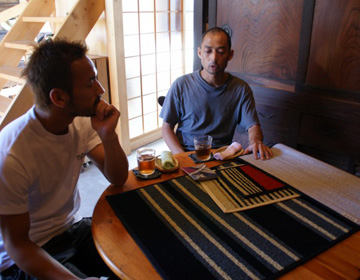 |
Woven fabric that blends in with lifeKurashiki city is a beautiful city with rows of willow trees along the river, and streets lined with white plaster wall mansions. It is a picturesque city which carries the atmosphere of Edo to the present day. There is a hidden treasure which blends in well with these beautiful streets. It is the “Kurashiki Dantsu”. |
Changing over timeKurashiki Dantsu was crated by the authority of folk craft Sori Yanagi. However, it is not very widely known. This is because production stopped in 1986. ”Igusa” cultivation was popular in Kurashiki City and its surrounding area. From the Late 19th century to early 20th century, ”Hanagoza” was produced for export. |
 |
 |
Preserving what is goodKurashiki Dantsu became popular as a local ”kogei” of Kurashiki, but by the 1970’s it faced hardship again due to both increase in the price of material and the aging of craftsmen. The difficulties could not be overcome, and production of Kurashiki Dantsu came to an end in 1986. |
ACCESS
- Kurashiki Dantsu
- 490-7 Hayataka, Kurashiki, Okayama
- URL http://kurashikinote.jp/
 Discovering Japan [Nihon] through authentic craftsmanship [Honmono]
Discovering Japan [Nihon] through authentic craftsmanship [Honmono]